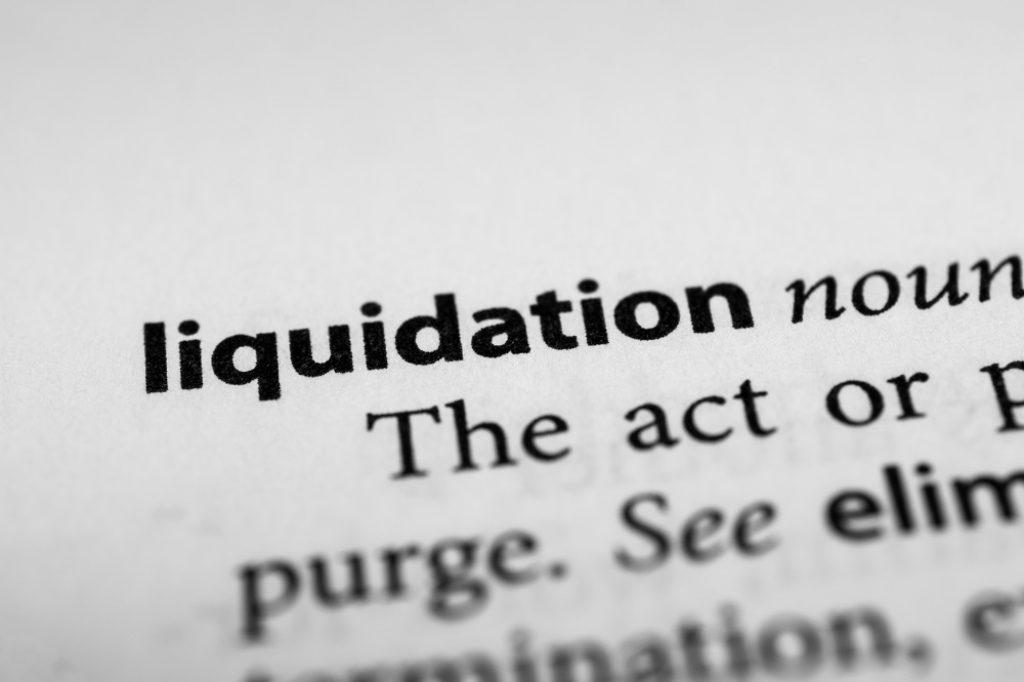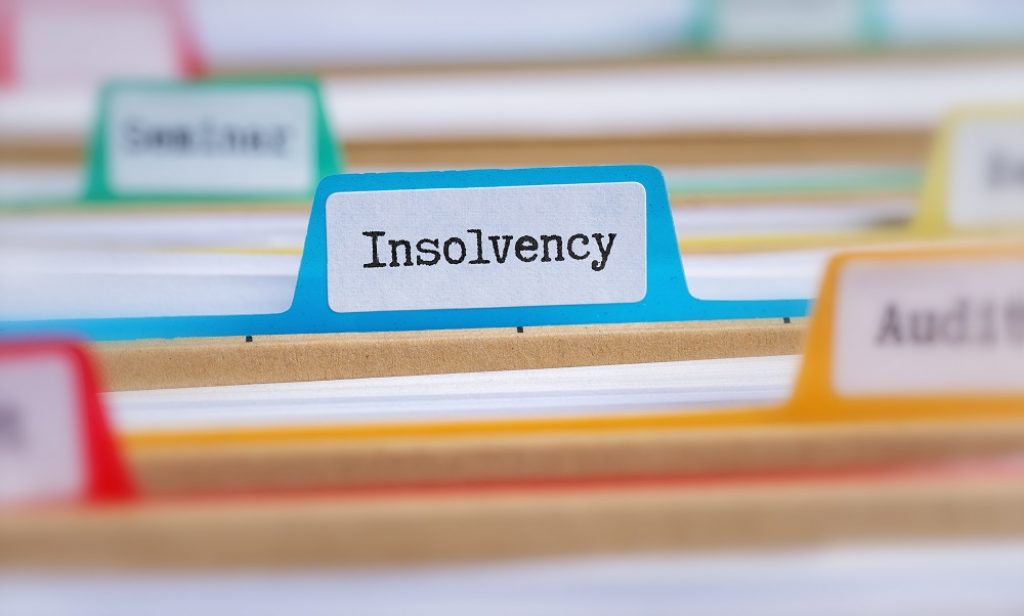In the world of corporate financial management, certain situations may call for large scale decisions to be made by the company’s director or board of directors. This is particularly noticeable in the unfortunate event that a company is found to be incapable of paying back their creditors.
A rather unfortunate circumstance, the company is therein dubbed as insolvent and as such must make executive decisions so as to decide the future of said insolvent company, with two among these possible routes being referred to as administration and liquidation.
Though often confused or thought of as practically the same thing, administration and liquidation are actually quite distinct routes that can have drastically different outcomes if performed successfully, and as such it is important for all individuals involved to understand said distinction prior to making a decision.
What is Liquidation?

Liquidation is a formal procedure utilized in the event that a company has reached the point of insolvency, liquidation is the subsequent conversion of the company’s assets to more liquid forms of value such as cash or similar financial implements that allow the company to pay back their creditors.
The decision to liquidate the company’s assets so as to undo its insolvency can have a myriad of benefits, drawbacks, and a drastically different end result to that of administration if performed successfully – and as such, should be fully evaluated as a potential option prior to being pursued.
Benefits
Often, the primary benefit to entering liquidation for the company is that the affairs of said company are ceased once the process is complete, allowing its directors and other interested parties to move on with their business with the assurance that the matter of insolvency is now closed.
Another benefit to the usage of liquidation as opposed to administration is the relatively simpler strategizing and processing involved therein, with liquidation most often simply requiring the cataloguing and subsequent selling of the insolvent company’s assets.
Finally, there is the fact of legal time limits, wherein liquidation is (usually) unconstrained in terms of how long a company has to liquidate their assets and pay back their creditors, a stark contrast to the relatively short time that administration is allowed to occur within in order to achieve its purpose.
Drawbacks
The primary drawback to liquidation is dependent on the nature of the company, its assets, and the value of said assets as they are being liquidated.
Such factors, when in the incorrect parameters, can result in creditors, partner corporations and suppliers losing significant amounts of money as the insolvent company goes under, an extension of the fact that the directors and the employers will also lose money as they lose their employment.
This will often result in an enforced ceasing of company trading, the usage of said company’s trading license, as well as a loss in informal reputation among associates of said insolvent company.
End Result
The most distinct difference between liquidation and administration is in the end result of said processes.
Marchford – who specializes in company closures – notes that in the case of liquidation, this will equate to the insolvent company being entirely shut down, both legally and informally as its assets are sold off or otherwise seized by creditors and regulatory bodies.
For the director, liquidation is often the end point for their company as it enters a stage of bankruptcy or debt defaulting, with the company being lost to the director and any other ownership related parties therein.
Liquidation is best utilized as a final resort after all avenues have been explored – save for the rare situation wherein the director or board of directors of a company wish to close it down for certain reasons, such as personal health or projected but as of yet unrealized insolvency in the future.
What is Administration?

Also a formal legal procedure performed by a company that has reached the point of insolvency or has become aware of a looming insolvency status, administration involves complex strategizing and analysis of said insolvent company and its financial situation so as to formulate a plan that may rescue the business and prevent it from shutting down or entering liquidation.
This is usually done with the aid of a third party firm who specializes in such procedures and is capable of analyzing the pertinent data provided by the insolvent company so as to provide advice and restructuring to the director or directors of said insolvent company.
Benefits
Unlike liquidation, a benefit of utilizing the administration process is the fact that the directors of the insolvent company as well as any of its employees have a chance of retaining their employment and position within the company, allowing them to continue with their lives in the majority of cases.
This is even further reinforced by the fact that creditors and their subsequent claims against the insolvent company will be placed under a temporary moratorium, preventing them from undergoing further legal procedures against said insolvent company for a certain period of time.
The moratorium is considered automatically in place the moment the insolvent company enters a state of administration, but may be undone in certain situations if granted by an administrator of the law, likely during the proceedings of a court session.
In the event that the only alternative to administration is compulsory or enforced liquidation of said insolvent company and its assets, it is likely that the total cost of performing a successful administration procedure would be significantly less expensive than what would be spent during a compulsory liquidation of company assets.
Drawbacks
Much like liquidation, the procedures of administration also come with their own set of negative characteristics that may make performing administration impossible or rather problematic for the insolvent company and its employees.
The first of these is a loss of legal control of the insolvent company, with the director placing the care of said insolvent company in the hands of a court appointed executive.
This is not to be confused with a loss of ownership, however, as the director or board of directors will still retain legal ownership and liability in relation to their company.
By extension of this, the court appointed administrator and the insolvent company itself must be capable of demonstrating not only their willingness to perform administrative restructuring of the company but also of their capacity to do so – both to the court of law as well as to any creditors wishing to pursue other legal proceedings.
This can have the negative effect of damaging the company’s future reputation, especially if the administration process is successful and the company exits the state of insolvency – essentially rescuing itself at the cost of public image.
And finally, there is always the case of the administration proceedings being rejected by the court of law, governing bodies, or creditors of particular tenacity, and as such it is possible for the company to enter even further into debt as the monetary value lost to the administration process is still charged despite its failure.
This can result in the company entering compulsory liquidation despite the filing of a voluntary administrative arrangement to the concerned regulatory bodies.
End Result
In the fortunate event that the insolvent company has been successfully administered to and the creditors have been satisfied sufficiently, legal control of the company will be returned to the board of directors and the company’s shareholders.
This will allow the company to continue to operate in a legal and financial capacity, of which is usually considered the best case scenario for the majority of companies that become insolvent.
Though some minor liquidation of assets may be factored into the administration process, it is quite likely that the majority of the formerly insolvent company’s assets will still be under their ownership, allowing it to continue internal function in a similar manner to before the insolvency.
Is Administration Better than Liquidation for the Company?
This will depend on the goals and projected future of the company, as a board of directors that no longer wishes to continue the function of the insolvent company may find that liquidation and subsequent ceasing of operations to be far more preferable than administration.
However, in the event that the company has simply fallen on hard times or poor management has resulted in the financial failure of an otherwise profitable enterprise, administration is a far more advisable route to take so as to not only retain potential future profits but to also restructure said company in such a way that it functions even better than before entering insolvency.
For creditors pursuing compensation and dues, administration is likely to result in more of their money being returned as either the company continues trading and returns to a steady flow of income or is otherwise liquidated in a more profitable manner than simple compulsory liquidation will yield.
What Comes First – Liquidation or Administration?
Though the choice of whether to perform liquidation or administration is usually a binary one, the particular order in which one process is performed before another is usually dependent on the opinions of the board of directors as well as the majority shareholders.
This is still applicable even in the case of compulsory liquidation being placed against the insolvent company by creditor parties, as the choice of entering administration is still applicable and seen as a valid rescue strategy to prevent compulsory liquidation of the insolvent company’s assets.
In most cases where the majority shareholders and company directors wish to continue the existence and function of the insolvent company, administration is performed, making it the process that “comes first” so to speak.
Can Administration Result in Subsequent Liquidation?
Yes, administration can result in liquidation as an end result, either due to the failure of the administration process or the decisions of the administrator.
Such factors like an impossible administration or unethical or illegal practices being found in the insolvent company will often result in the administration procedure being terminated and the insolvent company entering a state of compulsory asset liquidation.
This may also be reinforced by the opinions and reports of the licensed insolvency practitioner, who will be present throughout all the processes and negotiations involved in the procedure of company administration.
Can Administration Cancel Out Compulsory Liquidation?
Compulsory liquidation is considered the end point of a creditor’s lengthy pursuance of justified compensation towards an insolvent company, wherein they have petitioned a court of law and other regulatory bodies to forcefully liquidate a company and its assets in order to have the creditor’s debts fulfilled.
Though a dire situation wherein the director’s company is put at risk of being shut down, one possible alternative is the filing of a CVA or company voluntary arrangement, also known as placing the company in a state of administration so as to place a moratorium on any subsequent claims made by creditors as well as place the compulsory liquidation order on hold.
In the event that the administration is unsuccessful, however, it is possible for the director or directors of said insolvent company to be investigated by the court and its agents, as well as a further loss of monetary value due to the fees and processes involved in said administration – even if ultimately found to be unsuccessful.
As such, choosing to pause or cancel a compulsory liquidation order by way of entering administration should be done with caution and data-driven decision making, as a company with little to no projected profitable future in its market sector may in fact be better off liquidated and subsequently shut down instead.
References:
1. Gennaro A. Insolvency Risk and Value Maximization: A Convergence between Financial Management and Risk Management. Risks. 2021; 9(6):105. https://doi.org/10.3390/risks9060105
2. Written by James Chen, Reviewed by Ebony Howard. (October 19 2020) “Administrator” Investopedia Retrieved from www.investopedia.com Retrieved on February 5 2022. (https://www.investopedia.com/terms/a/administrator.asp)
3. Schillig, M. (2016-03-10). Winding-Up and Liquidation. In Resolution and Insolvency of Banks and Financial Institutions. : Oxford University Press. Retrieved 4 Feb. 2022, from https://oxford.universitypressscholarship.com/view/10.1093/oso/9780198703587.001.0001/isbn-9780198703587-book-part-19.





